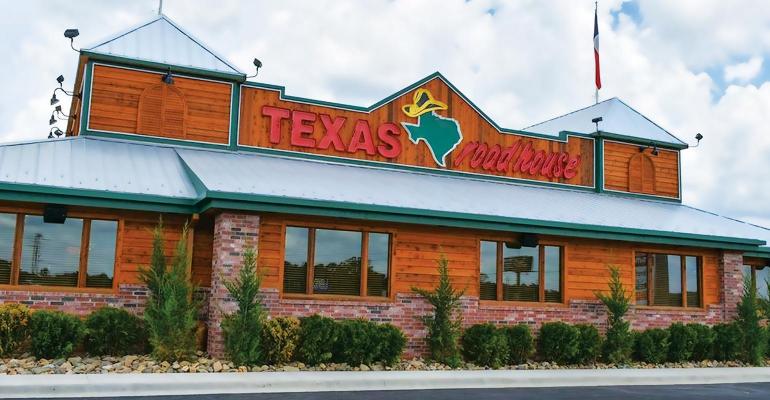Texas Roadhouse Inc. expects higher labor costs, which impacted its first quarter bottom line, to continue throughout 2019, company executives said Monday.
The Louisville, Ky.-based casual-dining company said labor costs for the year would be partially offset by 1.5% in price increases that Texas Roadhouse took on its menus in late March.
“We now expect our full-year labor per store week growth to be 7% to 8%, including the impact of traffic growth,” said Tonya Robinson, Texas Roadhouse chief financial officer, in a first-quarter earnings call with analysts. The company had forecast labor costs increases in the middle single digits, though she said the lower end of that guidance had “been taken off the table.”
Scott Colosi, president of Texas Roadhouse, said the company’s first-quarter bottom line profit was “significantly impacted” by the higher labor costs.
“We currently expect this trend to continue for the rest of the year, and as a result, we've updated our guidance on labor per store week growth for 2019,” he said. “The additional 1.5% pricing we put in place at the beginning of the second quarter did provide a significant benefit to our bottom line the rest of the year. Still, as we said last quarter, we may or may not be able to hold margins flat as a percentage of sales for the year.”
The company targets restaurant margins of 17% or more (for fiscal 2018 it was 17.4%), but Colosi said he expects the company to stay above that benchmark.
“Our intention is to head back towards 18% over time,” he said.
“We're certainly facing labor challenges in our business right now, and it was disappointing to give back some money on the bottom line this quarter,” he said. “However, it's important to remember that our operators are paid off the bottom line, and they have a vested interest in effectively managing our labor spending to protect sales over the long term, even if it results in some short-term pain.”
Colosi said Texas Roadhouse units over the past 10 years have increased average annual unit volumes from $3.6 million to $5.2 million and added employees to accommodate those higher volumes.
Colosi said turnover was in the high 120% range.
“That includes the transfers and other things that we have in our system,” he said, and the company is paying workers market-level rates in the front and back of the house.
“We don't know if our turnover would have been 140% if we weren't doing some of these things with staffing to enable us to have more scheduling flexibility, talking to our folks more about what they need to do a better job, all those kinds of things,” he said.
Colosi did say the labor cost increases would have “zero impact on unit growth going forward.” That will include more than 20 Roadhouse units and several of its second sports-oriented brand, Bubba’s 33.
For the first quarter ended March 26, Texas Roadhouse reported net income slipped 7.6% to $50.4 million, or 70 cents a share, from $54.5 million, or 76 cents a share, in the same period last year. The company cited first-quarter higher general and administrative expenses, higher depreciation and amortization expenses and higher restaurant margins. Revenues increased 10% to $690.6 million from $627.7 million in the prior-year quarter.
Same-store sales increased 5.2% at company-owned restaurants and 4.3% at domestic franchised locations.
The company plans to open four Bubba’s units this year, Colosi said.
The company introduced the Bubba’s 33 sports concept in 2013. Bubba’s was a Nation’s Restaurant News Hot Concept in 2017.
In 2018, the company added lunch to one Bubba’s in Albuquerque, N.M., and in the past several months added it to four more restaurants.
“It gets more encouraging by the day,” Colosi said.
Andy Barish, an analyst with Jefferies, said in a note that Texas Roadhouse management “indicated new Texas [Roadhouse] units having good honeymoon sales in smaller towns, while Bubba's are opening slow but older classes seeing healthy [same-store sales] growth.”
Colosi said he would hope new openings of the six-year-old Bubba’s concept would reach the success that new Roadhouse units have seen. For example, Colosi said, the six Roadhouse units opened so far this year averaged sales of $148,000 each in their first week.
Barish said the company planned to introduce smaller Bubba's prototypes this year, but it is “generally pleased” with the brand at 25 units and is focusing on clustering development.
Colosi noted during the call that “compared to most sports restaurants or sports bars, the sales that we're opening with are actually, like, pretty darn good.”
Texas Roadhouse, which first opened in 1993, has more than 590 restaurants in 49 states and 10 other countries.
Contact Ron Ruggless at [email protected]
Follow him on Twitter: @RonRuggless





